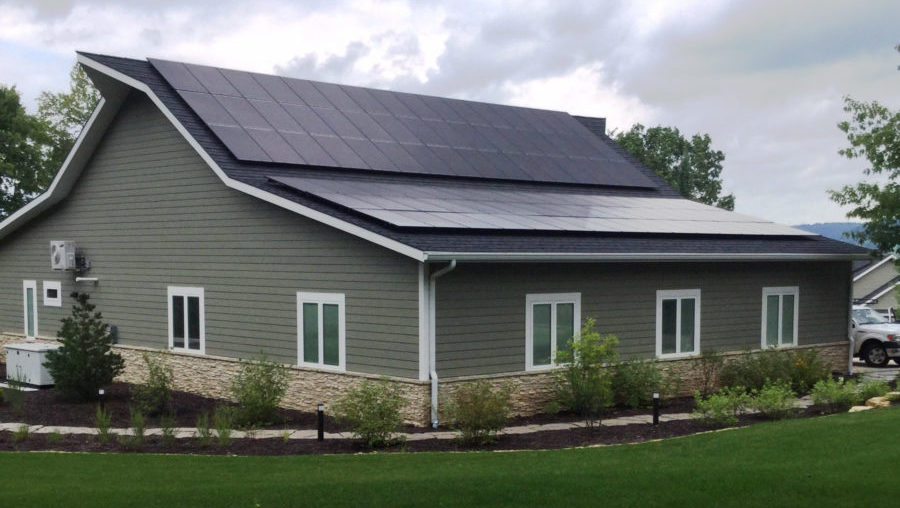5 Questions to Help You Decide To Go Solar
Solar panels are no longer just for the wealthy and environmentally conscious. They are also for anyone interested in saving money by investing in a renewable resource that will always be there – the sun! There are many factors to determine if investing in a solar energy system makes sense for you. Much like making your home more energy-efficient, investing in solar can be a home improvement upgrade that pays dividends…and then some.
Below are some things to consider when deciding to evaluate the financial and environmental benefits of solar.
What is your roof like?
Let’s talk about the characteristics of your roof; direction, age, and pitch. South or south-west-facing roofs are the optimal placement for solar panels. It is, however, still possible to produce enough energy for your home with west or east-facing roofs. The ideal roof pitch for a roof-mounted solar array is 30 degrees. Installing panels on other roof pitches is also possible.
Your roof should have no (or minimal) roof obstructions like skylights and chimneys. Is there any shading on your roof from surrounding buildings or trees creating shadows and blocking the sun? The more obstructions your roof has, the more design and engineering is required to optimize your system for the greatest energy production.
Next, how old is your roof? If your roof is nearing the end of its life, consider replacing your roof before adding solar. A roof-mounted system will provide another protective layer for your shingles underneath the modules.
Lastly, is your roof large enough for the number of solar panels you will need to generate the energy you’re projecting? This is a question Eagle Point Solar can help you answer. Modules are constantly getting more efficient, helping to decrease the number of necessary panels to produce the same amount of energy production. Panel sizes and production capabilities also vary by brand, making it harder to determine the appropriate amount of roof space needed to install your array. An experienced solar design analyst can make quick work helping to answer these questions and provide you with a virtual rendering of your roof-mounted system.
Should I get a ground-mounted solar array?
For those who would prefer to have easier access to their array and a roof-mounted system is not ideal, ground arrays are the solution. Ground arrays can remedy almost any of the characteristics which could cause your roof not to be optimal. Look for any obstructions which may cause shading issues where your array would be installed. A contractor will also be able to help you determine if a ground array is a viable option in your area due to local restrictions or regulations.
What incentives can you take advantage of?
There are many state and federal incentive programs for renewable energy. While the Federal incentives apply to all states, the state incentives vary for each state. Iowa, Illinois, and Wisconsin all have different state incentive programs. The Eagle Point Solar website contains up-to-date incentive information.
Many states also offer additional money-saving programs to help encourage the transition to solar. Illinois has the Solar Renewable Energy Credit (SRECs) program and Wisconsin deployed Focus On Energy. Business owners can also take advantage of the Modified Accelerated Cost Recovery System (MACRS) depreciation. Consult a tax advisor to help you determine which incentives are right for you.
What policy does your utility have?
Utility policy is a key component in determining a solar array’s return on investment. Policies are often focused around the use of net metering, avoided cost, and solar overproduction. However, every utility is different and often varies with regard to solar policies. Understanding your utility policy is key to building a solar system designed to meet your expectations. Additionally, take time to educate yourself on your monthly electric bill and how the various utility charges relate to your overall monthly energy usage. Once you understand your cost of energy and the various utility fees, the financial benefits of solar become easier to recognize.
What is the weather like in your area?
The weather has less of an impact on a solar array’s performance than you might expect. Solar has been proven to be a viable option in all types of climates for decades. The same array in Texas will perform similarly in Iowa, Wisconsin, or Illinois. Solar panels convert direct and indirect sunlight into electricity. They can create electricity on cloudy days and are not dependent on atmospheric temperatures. Meaning, they create energy on hot summer days and cold winter days. Less daylight does have a temporary effect on production in the winter, but long summer days quickly make up the difference.

Have more questions about solar? Browse through our library of FAQS at https://eaglepointsolar.com/faqs/ or chat with us online, send an email or give us a call.
